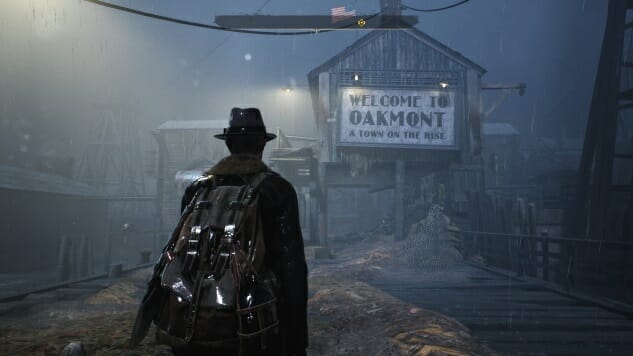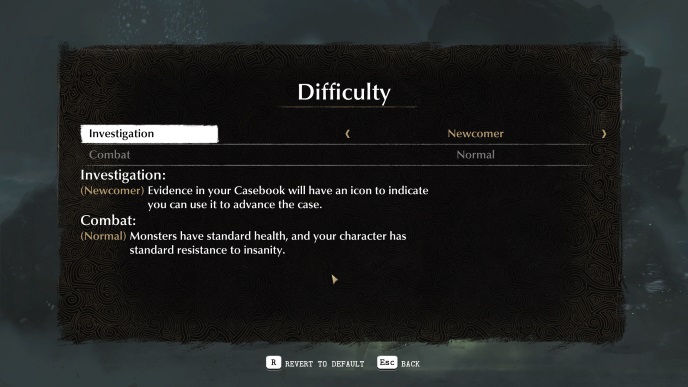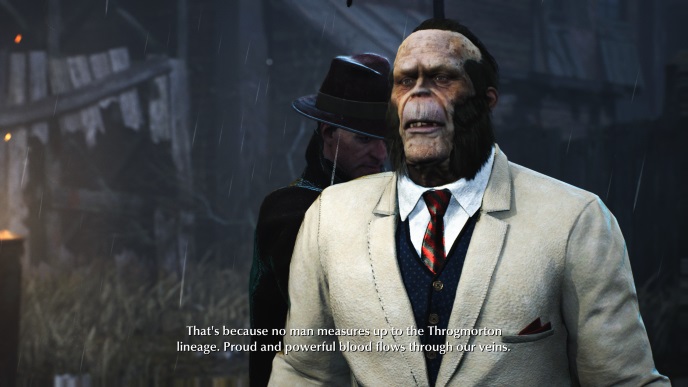The Fine Detective Game The Sinking City Tackles Lovecraft’s History of Racism

Frogwares, developers of a well-received series of Sherlock Holmes mystery adventure games, have dipped their toes into something far more eldritch with The Sinking City (published by BigBen Interactive). While it’s rough around the edges and not without its flaws, it’s also easily the best Lovecraft game I’ve played this year (mind you, that bar is not especially high).
The Sinking City takes place in the flooded town of Oakmont, located on an island somewhere in the Northeastern United States. It follows Charles Reed, a World War I veteran and private eye plagued with visions of the supernatural that led him from his home in Boston to Oakmont, and as soon as he steps off his boat finds himself embroiled in the local politics and mysteries of the island town.
The Sinking City is first and foremost a detective game, although Reed’s supernatural ‘retrocognition’ ability gives him a slight leg up on his contemporaries. Main storyline cases usually contain multiple steps, dozens of clues, and multiple possible conclusions from the deductions that are available to you. Solving cases is for the most part satisfying, interesting, and fun—each clue feeling like another breadcrumb toward the answer, and even the most difficult cases never leaving me too stumped.
Side cases found in the open world are more linear, and do not contain the more complex aspects of case-solving found in mainline missions. There’s no shortage of variety though—along with the game’s dozen or so main cases, there are easily just as many side cases, and they are mostly excellent bite-size experiences that show off more of Oakmont’s denizens and locales.
While many technical aspects of The Sinking City are not on the level of modern big budget games, most of the rough edges have been smoothed out by smart use of player-side options. While I expected to grow irritated by constantly running around the city, getting around Oakmont turned out to be surprisingly painless.
Combat, however, is unfortunately rather straightforward and dull, and even more so in the game’s few required underwater sections. Thankfully, the game allows players to set the difficulty of Combat and Investigation separately, and switching combat difficulty to “easy” alleviates much of the headache of these short encounters.

Oakmont is a complex city. Divided into six districts, it is a town dealing with both supernatural threats (in the form of the Flood, cultists, and the occasional Lovecraftian monsters) and mundane threats (oppression, racism, sexism, and plenty of plagues and diseases). Frogwares clearly made an attempt to depict real world prejudices and to grapple with Lovecraft’s history of racism, but while I was initially hopeful for an incisive take on Lovecraftian themes and racism, I came away feeling somewhat underwhelmed.
Oakmont is home to three races of humans, with your bog-standard Homo Sapiens as the predominant species, and joined by the fish-like Innsmouthers and the more ape-like Throgmortons. The Innsmouthers and the Throgmortons are both playing on Lovecraftian archetypes, but here they are fleshed out a bit more. The Throgmortons, a rich and traditional family of Oakmont citizens, see their ape-like features as a blessing, a sign of their pure bloodline. The Innsmouthers are shown as relative newcomers to Oakmont, and are often depicted as a stand-in for immigrant populations, as after their original home of Innsmouth was destroyed, they took refuge in Oakmont.
The parallels being drawn are not subtle—there is even a character introduced late in the main storyline who is campaigning on a policy to “build a wall” around Oakmont, and to “make Oakmont great again,” which elicited a deep groan from me. The Ku Klux Klan are also present in Oakmont, though they seem more concerned with Innsmouthers than with… you know, black people (of which The Sinking City has plenty of, to be clear).

